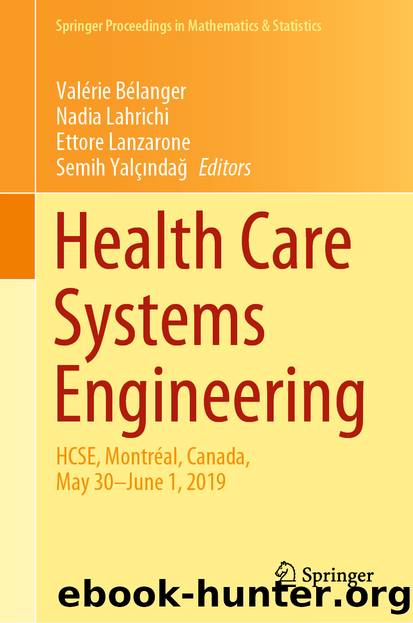Health Care Systems Engineering by Unknown

Author:Unknown
Language: eng
Format: epub
ISBN: 9783030396947
Publisher: Springer International Publishing
2 Literature Review
Manufacturing and retailing industries have successfully applied SCM, resulting in substantial benefits and cost savings. In contrast, the healthcare sector is struggling to adopt these concepts [7, 8]. The supply chain activities represent 30% of total hospital costs and inventory costs take up 10–18% of net revenues [1, 9]. Efficiently managing the supply chain can significantly reduce costs and waste, while meeting patient care service levels [9]. The main challenge in healthcare SCM is trading-off costs with inventory levels to sustain quality and timely patient care [10].
Effective inventory control lowers the cost of internal distribution by for instance improving inventory turnovers. Optimal replenishment policies need to be developed to maximize service levels in hospitals. Bijvank and Vis [11] investigate the impact of inventory models on medical supplies by establishing simple replenishment rules to determine reorder levels and reorder quantities. Rosales et al. [12], Di Martinelly [13] combine periodic and continuous replenishments in a hybrid two-bin inventory policy. The authors analyze the impact on costs, inventory levels and replenishment frequency at point-of-use locations. Landry and Beaulieu [14] use the (de)centralized material management system and the review period to determine the appropriate distribution policy for replenishment of point-of-use locations. Centralizing the logistics processes will lower both costs and inventory levels due to more frequent replenishments, reduce workload for logistics staff and provide a higher service level [15]. The impact of decentral inventory locations on the performance of replenishment systems in nursing units is investigated in the work of Bélanger et al. [3], by focusing on logistics staff productivity. The objective of workload balancing is considered by Lapierre and Ruiz [16], who develop a scheduling approach to coordinate distribution activities while respecting inventory capacities. The schedules determine the delivery frequency, the products to be replenished, as well as task assignment to improve personnel management.
The organization of the internal distribution within the OT is complex, as different types of medical-surgical supplies are stored in various central and decentral storage locations. The models discussed in literature use several decision variables to determine the impact of distribution policies at point-of-use locations. In this work, we will integrate these indicators to assess the performance of the distribution system which depends on multiple criteria, such as cost, service level, personnel satisfaction, degree of centralization, etc. The complex problem structure, however, makes analytical models impractical as they require many assumptions to simplify modelling, making models unrepresentative of reality [8]. Therefore, simulation is used as a tool to support decision-making in healthcare logistics. This work contributes to literature as simulation is mostly applied to study patient flows rather than hospital material logistics, and multiple performance indicators are identified to evaluate the multi-dimensional character of logistics in healthcare.
Download
This site does not store any files on its server. We only index and link to content provided by other sites. Please contact the content providers to delete copyright contents if any and email us, we'll remove relevant links or contents immediately.
Hit Refresh by Satya Nadella(9085)
When Breath Becomes Air by Paul Kalanithi(8369)
The Girl Without a Voice by Casey Watson(7851)
A Court of Wings and Ruin by Sarah J. Maas(7735)
Do No Harm Stories of Life, Death and Brain Surgery by Henry Marsh(6910)
Shoe Dog by Phil Knight(5222)
The Rules Do Not Apply by Ariel Levy(4912)
A Higher Loyalty: Truth, Lies, and Leadership by James Comey(4909)
Hunger by Roxane Gay(4895)
Tuesdays with Morrie by Mitch Albom(4733)
Everything Happens for a Reason by Kate Bowler(4704)
The Immortal Life of Henrietta Lacks by Rebecca Skloot(4552)
Millionaire: The Philanderer, Gambler, and Duelist Who Invented Modern Finance by Janet Gleeson(4425)
How to Change Your Mind by Michael Pollan(4320)
All Creatures Great and Small by James Herriot(4277)
The Money Culture by Michael Lewis(4140)
Man and His Symbols by Carl Gustav Jung(4099)
Elon Musk by Ashlee Vance(4089)
Tokyo Vice: An American Reporter on the Police Beat in Japan by Jake Adelstein(3953)
